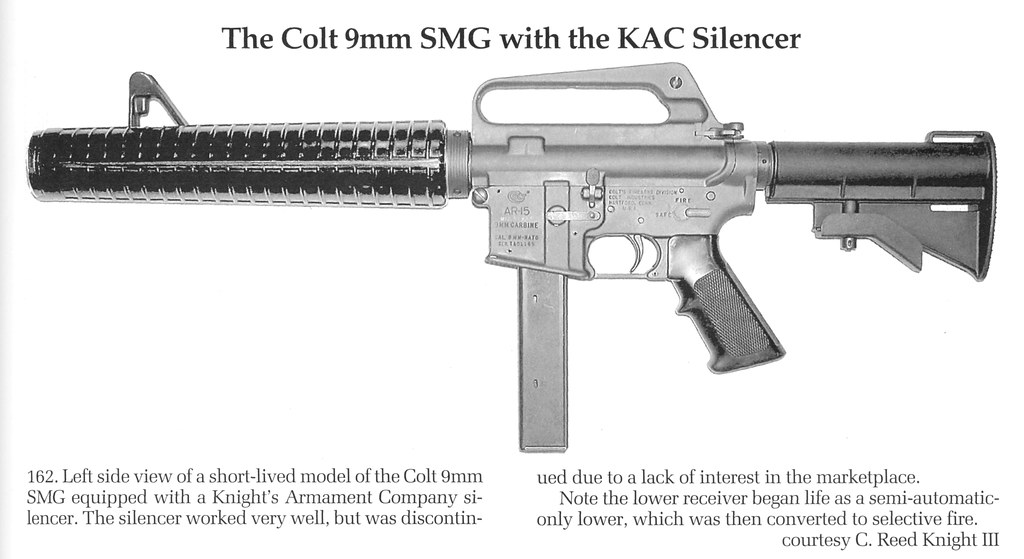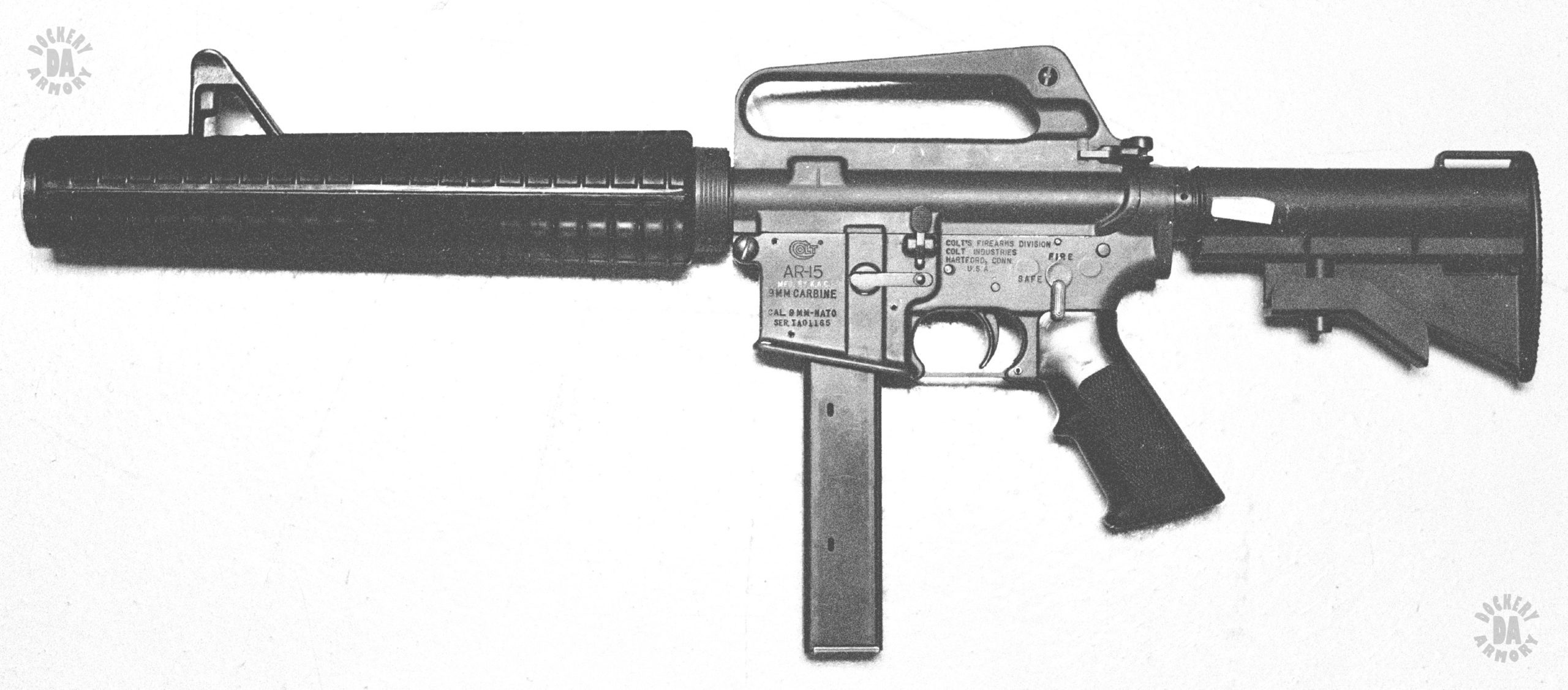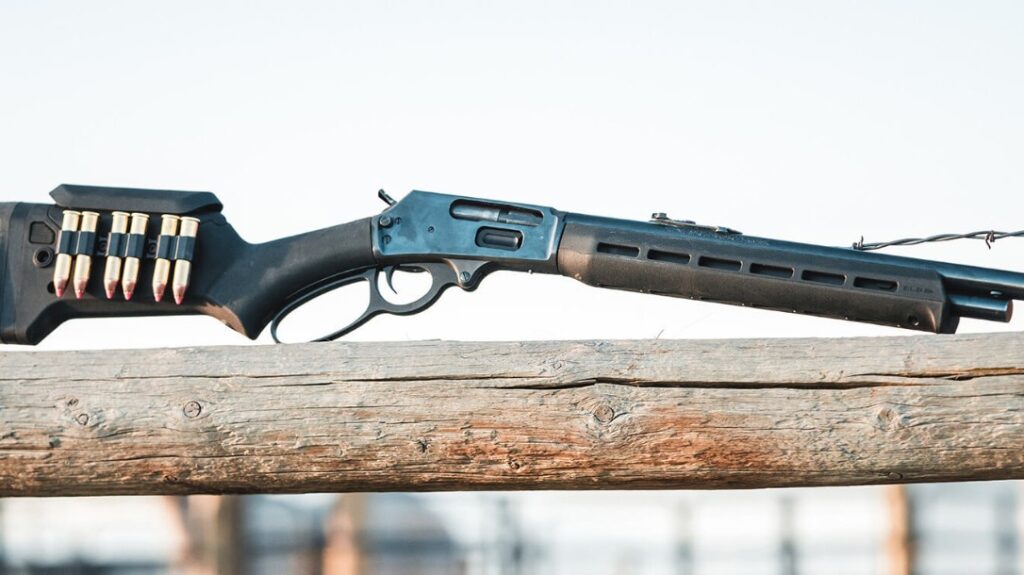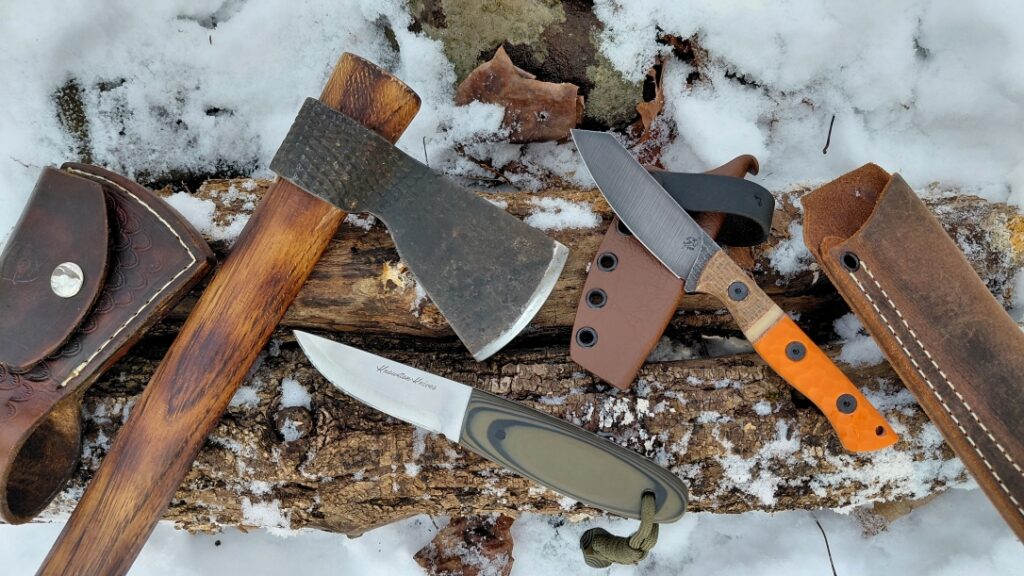The Colt SMG was a true 80’s child. It might as well have a mullet and a pastel pink t-shirt. Colt wanted to compete for that Spec-Ops, SWAT Team, and Counterterrorism money that HK was eating up. The Colt SMG was a 9mm submachine gun with a 10.5-inch barrel that was externally an AR-type firearm. Internally it was a direct blowback gun. They saw some success withThe Marine Corps and numerous police agencies, including the DEA. The DEA bought standard SMGs, and they had their own special version made, commonly called the DEA Model.
The DEA Model, or RO636, only had one major difference between the DEA Model and the standard was an integral suppressor. The idea was to create what was essentially an Americanized MP5SD. The Colt SMG would be a light, handy, and quiet close-quarters weapon. This specific gun had a very specific purpose, and it wasn’t for DEA teams running quiet operations.
The Purpose of the DEA Model
The DEA has what’s called Clandestine Laboratory Enforcement Team. If you have a lab where you are creating drugs, then this team is specially trained to take you down and do it safely. Off the top of your head, you might think meth lab, and admittedly that is likely a common target. However, labs creating crack cocaine, fentanyl, and more are also in their purview.
Advertisement — Continue Reading Below

These environments often have DEA agents wearing full hazmat suits and respirators and tackling these threats head-on. The original justification for the DEA Model was to reduce muzzle flash as much as possible. The suppressor and ported exhaust barrel would eliminate muzzle flash.
Why was muzzle flash elimination so important for the CLET teams? Well, apparently, there was some fear that muzzle flash and burning gasses could create a fire or explosion in these labs. Sure, I buy that meth labs are basically ticking time bombs, but I’m not so sure that’s the real reason.
Advertisement — Continue Reading Below
But Really?
I’m also not an expert on meth labs by any means. What I am an expert on is coming up with fancy jargon to make excuses to make not-so-traditional things. I imagine the head shed of the DEA aren’t gunfighters and weren’t clearing rooms. They don’t know how awesome suppressors can be indoors to maintain communication and keep situational awareness high. If I was clearing a single-wide trailer that’s now a meth lab, I would also want a suppressed firearm.

Trying to justify a suppressor to the DEA head shed must have been tough. I imagine the bureaucrat at the DEA pictured assassins and whisper-quiet cans and couldn’t see the benefits of suppressors for clearing rooms. This was a great way to justify it. However, this 100% speculation is based on working for the government.
Advertisement — Continue Reading Below
How It Got Made
Colt took the order and immediately teamed up with Knight’s Armament. They seemed to take things from there and produced and permanently attached the suppressor. They also used A2 length hand guards, with a cut for a front sight base, to cover the barrel and suppressor system.

It’s tough to say the steps KAC went through without an example, and there is limited information online. I found a print by an artist that does show a CLET team wielding them, but no actual photos. I can only dig up a few actual photos, and the majority come from a single ARFCOM post.
Advertisement — Continue Reading Below
The DEA Model Colt SMG is an interesting mix and, certainly, something Colt didn’t take much advantage of. However, in the end, I guess the M4 won out anyway and replaced most SMGs in major military forces anyway.















